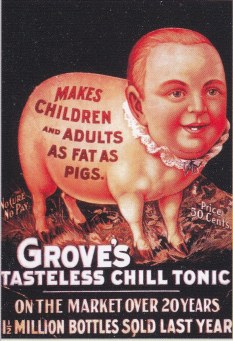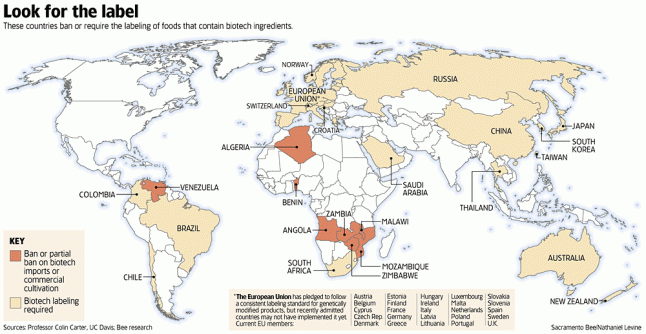Is your kitchen making your Sick … or Fat?
So you try to choose mostly organic, natural, healthful, locally produced foods.
That’s great … but the kitchen you prepare them in could be making you sick or putting on extra pounds. Really!
With obesity rates continuing to rise at an alarming rate, scientists have started to ask if something aside from diet, exercise, and junk is to blame. Finally!
 As Robert H. Lustig, a professor of clinical pediatrics a t the University
As Robert H. Lustig, a professor of clinical pediatrics a t the University
of California, San Francisco said: “Even those at the lower end of the BMI (body mass index) curve are gaining weight. Whatever is happening is happening to everyone, suggesting an environmental trigger.”
What researchers like Lustig are discovering is that certain chemicals in food, drugs, and industrial products alter metabolic processes in ways that promote weight gain or worse.

These insidious enemies – called obesogens – are endocrine disruptors, meaning that they mimic human hormones and thereby can make you sick, fat, or both.
Let’s Find the Obesogens in Your Home:
 About 20 obesogens have been identified … and that list is growing.
About 20 obesogens have been identified … and that list is growing.
These are the best-documented obesogens and their most common sources:
* Alkylphenols are surfactants (detergents) used in many industrial, household, and person care products.
* Pesticides like DE (dichlorodiphenyldichloroethylene) are linked to bigger BMIs (body mass indices) in children.
* Parabens are used as preservatives in cosmetics due to their bactericide or fungicide properties.
* Persistent organic pollutants (POPs) such as PCBs and dioxins work their way up the food chain and accumulate in animal fats. They’ve been banned for decades but as the name implies, traces are still found in meats, dairy products, and some fish (farmed fish have higher levels than wild fish).
* Phthalates are used in plastics and as solvents, and are found in vinyl  flooring, adhesives, detergents, lubricating oils, automotive plastics, plastic clothes (raincoats), personal-care products (soaps, shampoos, hair sprays, and nail polishes), plastic packaging film and sheets, garden hoses, inflatable toys, blood-storage containers, medical tubing, some children’s toys. People are exposed to phthalates by eating and drinking foods that have been in contact with phthalates.
flooring, adhesives, detergents, lubricating oils, automotive plastics, plastic clothes (raincoats), personal-care products (soaps, shampoos, hair sprays, and nail polishes), plastic packaging film and sheets, garden hoses, inflatable toys, blood-storage containers, medical tubing, some children’s toys. People are exposed to phthalates by eating and drinking foods that have been in contact with phthalates.
* Organotins are tin-based pesticides also found in PVC (a type of plastic), in some lubricating oils, hydrogen peroxide, and the coatings of some food packages and reusable glass bottles.
What About BPA?
Because it’s the best known endocrine-disruptor and potential obesogen, BPA deserves special attention.
BPA is primarily used in polycarbonate plastics, epoxy resins, and most cash register tapes.
This means that BPA is often used in food and drink packaging (e.g., some water and infant bottles), medical devices, food cans, bottle tops, water supply pipes, and some dental sealants and composites.
When BPA concerns first arose in 2007, many legitimate, in particular organic supplier asked all of their suppliers whether any of their food cans or packages contain BPA, and all certified they didn’t.
However, most have since refused to renew their certification, because they don’t control every part of their supply chain and fear liability for an erroneous certification.
By now, BPA is everywhere in the environment, and like virtually every canned food in the world.
This happened even though Consumer Reports agreed that the type of lining used in cans does not contain BPA, and the can makers even certified that BPA was not used.
In February 23, 2010 Washington Post article, “Alternatives to BPA containers not easy for U.S. Food makers to find”.
 On of the companies I buy from spends about $10,000 on lab tests trying to pinpoint the source of BPA in their canned tuna, and Consumers Union also found BPA in baked beans made by Eden Foods, which were packed in “BPA-free” cans.
On of the companies I buy from spends about $10,000 on lab tests trying to pinpoint the source of BPA in their canned tuna, and Consumers Union also found BPA in baked beans made by Eden Foods, which were packed in “BPA-free” cans.
Importantly, legitimate concern over BPA distracts from the fact that – according to recent research – BPA-free plastics contain compounds that also exert endocrine-disruptive effects.
Toxins in the Kitchen:
 You also need to keep an eye on toxins that affect the nerve, hormone, and immune systems, whose close interactions and mutual influences have led scientists to consider them one “neuro-endocrine-immunologic” system.
You also need to keep an eye on toxins that affect the nerve, hormone, and immune systems, whose close interactions and mutual influences have led scientists to consider them one “neuro-endocrine-immunologic” system.
These are the most common offenders:
* Ethanol, lead, and hexane.
* Pesticides – Any food or beverage not labeled organic may contain pesticides.
* Perfluoroctanoic acid (PFOA) – PROAs can be found in non-stick pots and pans.
Look for “PFOA free” on the label. The biggest danger is in overheating or scratching a non-stick pan that contains PFOAs.
Clearly, we can’t identify and avoid all of the potential obesogens and toxins in our lives. But we can be smart and mitigate our exposure, starting with our kitchens.
Bruce Blumberg, a biology professor at the University of California, Irvine, who coined the term obesogen in 2006, sums it up pretty well: “Eat organic, filter water, minimize plastic in your life. If there’s no benefit and some degree of risk, why expose yourself and your family?”
Get Back to Great-Grandma’s Kitchen:
Think old school. Chemicals have been omnipresent in home and personal care products since the 1920’s, so referencing grandma’s kitchen probably isn’t going back far enough in time – but you get the point, I hope!
Instead ask, “Would my great-grandmother recognize it?” I use this same question when teaching folks about food. Today we all know that the name like tomato can be the same today – but it doesn’t taste anything like when we were growing up – and most of us know why!
Storage
* Glass is a clean and cheap way to store nearly anything.
* Steel boxes and stoneware offer another option – and they look fantastic.
Cooking Utensils
* Stainless steel is sleek, cleans easily, and can be run through the dishwasher – better yet is surgical steel.
* Wood is a great choice. Bamboo, rosewood, and cherry are good options.
Pots & Pans
* Stainless steel is the first choice of serious chefs, and the lightest of all.
* Cast iron is durable, beautiful, a pro at even heat distribution, and it lasts forever.
Enameled cast iron is handsome and works in the oven as well as on the stove top.
* Copper will cost you and require a learning curve, bit it will also impress your friends.
* Glass is the way to go when baking. The idea that you need risky non-stick coatings to make a cake turn out right is pure baloney. Just grease the pan with organic butter or oil (I use only organic coconut oil).
* Stoneware is naturally non-stick, ages beautifully, and comes in a variety of forms from muffin pans to cookie sheets.
 To say these tips remove all hazards from your kitchen would be an exaggeration. But a bit of awareness could help protect your health, your family’s health … and your waistline!
To say these tips remove all hazards from your kitchen would be an exaggeration. But a bit of awareness could help protect your health, your family’s health … and your waistline!
Remember, I’m all about helping you all –
Plan for Tomorrow’s Good Health – TODAY!
Dr. Rhonda
Website: www.drhenry.com
Email: Contact@drhenry.com
Office: 702-269-8120















































You must be logged in to post a comment.